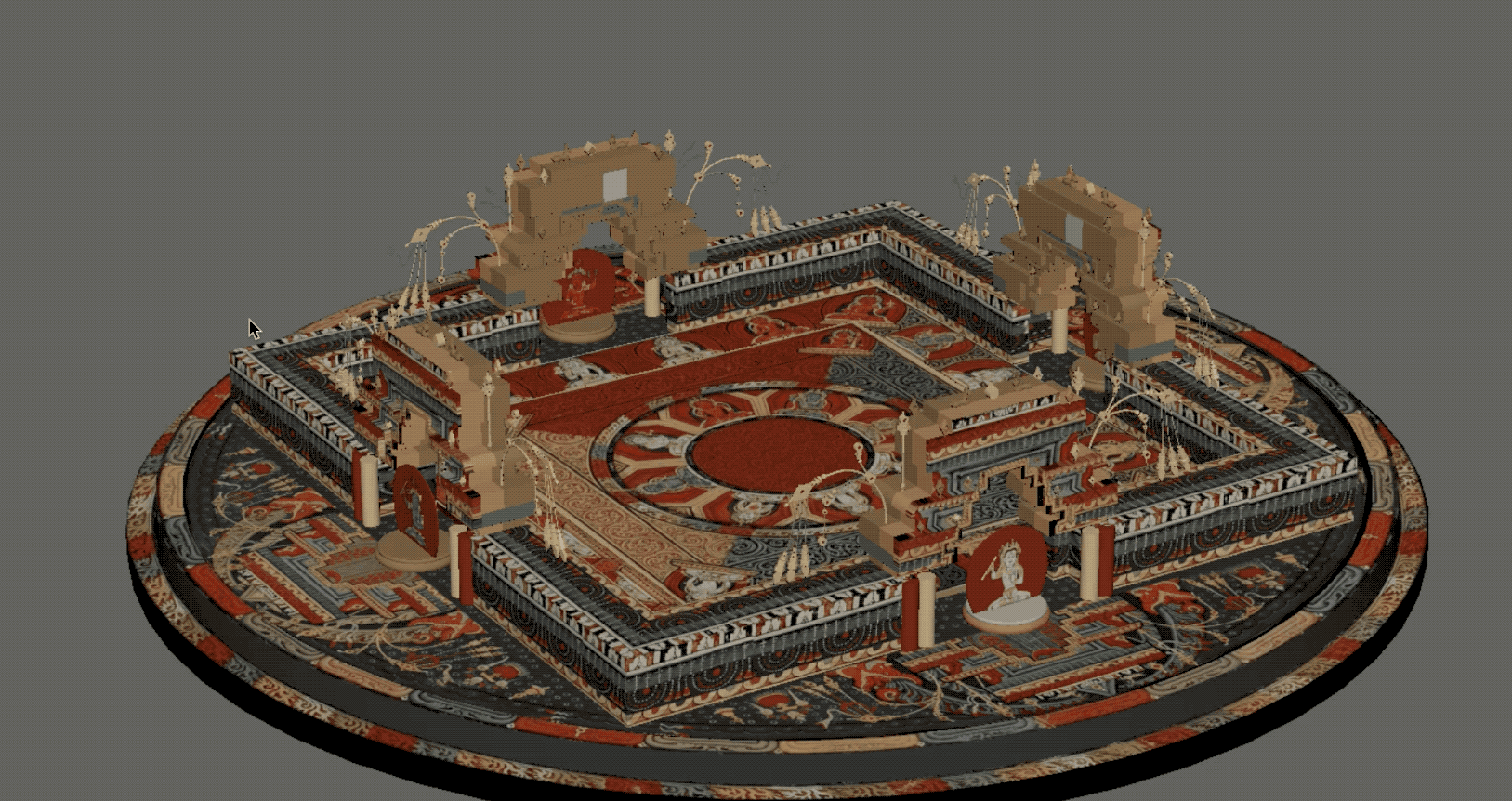Thangka Now
An Interactive AR Museum Experience

DURATION
COLLABORATION
5 weeks
CLIENT
Team of 2
( Advised by Professor Mark Skwarek)
Rubin Museum
MY ROLE
TOOLS
Unity
Cinema 4 D
After Effects
Kinect
-
3D animation
-
AR building
-
Prototyping
Overview
Thangka Now is an AR museum project that stimulates learning, promotes understanding, and inspires personal connections to the ideas, cultures and imagery of Tibetan art form, Thangka.
The project has three parts: AR Mandala, visual narratives through Thangka, and real-time kinect interaction Thangka.
Design Goals
Thangka Now aims to provide a engaging way for visitors to get educational information from unfamiliar arts. Instead of putting on an audio headset that recites information about the artwork as you approach, Thangka Now lets visitors see the unseen, imagine the art in its original environment and understand the background stories behind.

AR Mandala
A mandala is a spiritual and ritual symbol in Buddhism, representing the universe. Because of Thangka’s artistic style, Mandala in Thangka always appears in a flat 2D image. In order to let visitors better understand the abstract patterns from Mandala, We tried our best to restore the three-dimensional appearance of Mandela based on articles and interview with staff at Rubin Museum.
By scanning the Mandala, visitors will see AR Mandala on the screen. You can zoom in, explore, touch different parts of animated 3D Mandala and learn narration of the mandala.

Storyboard of AR Mandala


Three dimensional apperance of Mandala
Visual Narratives through Thangka
There is always a fascinating narrative story behind the Thangka. We animate one story of previous lives of the Buddha on the right corner of a Thangka, depicting when the Buddha, in his life as an elephant, saved a group of starving wanderers in the forest by sacrificing his body, hurling himself over a ledge for their sustenance.
When visitors come close to the Thangka, they can hover over the part they want to get stories, and trigger the narrative stories behind this specific part. We used Kinect to detect hand gestures.


The part depicting a story of the Buddha
Animated painting
Hand Gesture Interaction
aVisitors can either scan or wave their hands to interact with the paintings. We used Kinect and Cinema Suite plug-in in Unity to realize the interaction. By waving your hands, you could trigger the narrative stories. Plus, you could also see beautiful trails following the movement of your hands, which bring the fun of interaction.

Acknowledgement
We collaborated with Rubin Museum, a museum dedicated to the collection, display, and preservation of the art and cultures of the Himalayas. We were glad to receive high-res Thangka images from staff of Rubin, and background stories behind them as well.
